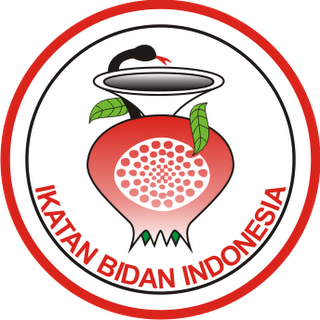Feasibility Study of Web-Based Application Pronalin as an Educational Media to Prevent Complications in Pregnant Women
https://doi.org/10.33860/jbc.v6i3.3836
Keywords:
pregnant, P4KAbstract
Introduction: The percentage of obstetric complication handling in Indonesia in 2018 reached 94.16%, West Java reached 91.7% and Tasikmalaya reached 116.9%. Data from the Puspahiang Health Center shows that 90 pregnant women experience complications. Efforts to minimize the incidence of complications in pregnant women can be made through the utilization of the birth planning and complication prevention (P4K) program through education based on the pronalin web-based application. Objective: This study aims to analyze the feasibility of the Pronalin Web-based application as a P4K education media for pregnant women. Method: This study uses the research and development (R&D) method, which passes material testing and application feasibility testing. Results: The validation assessment by material experts showed a score of 53 (feasible) and the results of the suitability test for use by pregnant women obtained a percentage of 79.4%, which means that the pronalin web-based application is "Feasible" for use by pregnant women. Conclusion: The Pronalin web-based application is very feasible and needed according to the expectations of pregnant women in preparing for childbirth. It is recommended that Health Institutions such as Health centers improve obstetric services through socialization and use Pronalin in educational programs for pregnant women.
Downloads
References
Abejirinde, I. O. (2018). Mobile health and the performance of maternal health care workers in low- and middle-income countries: A realist review. International Journal of Care Coordination, 23(3), 73-86. https://doi.org/10.1177/2053434518779491
Chae. J, K. H. (2021). Inteernet Based Prenatal Interventions For Maternal Health Among Pregnant Women : A Systematic Review and Meta Analysis. Children and Youth Services Review. https://doi.org/10.1016/j.childyouth.2021.106079
Chang. C.W, M. T. (2015). Electronic Personal Maternity Records: Both Web and Smartphone Services. Computer Methods and Programs in Biomedicine. https://doi.org/10.1016/j.cmpb.2015.02.008
Dartiwen. (2016). Pengaruh Penyuluhan Program Perencanaan Persalinan Dan Pencegahan Komplikasi (P4K) Terhadap Sikap Ibu Hamil Dalam Pencegahan Komplikasi Kehamilan Di Desa Kenanga Kab. Indramayu Tahun 2016. Jurnal Kesehatan Indra Husada, 4(2), 1-7. https://www.ojs.stikesindramayu.ac.id/index.php/JKIH/article/view/3/82
Davis, N. &. (2020). Pregnancy as a period of risk, adaptation, and resilience for mothers and infants. Development and Psychopathology, 32(5), 1625–1639. https://doi.org/10.1017/S095457942000112
Dinkes. (2020). Profil Kesehatan Provinsi Jawa Barat. Bandung: Dinas Kesehatan Provinsi Jabar. https://diskes.jabarprov.go.id/informasipublik/profil
Hamdani, D. (2023). Angka Kematian Ibu dan Bayi di Kabupaten Tasik Masih Tinggi, Masuk 15 Besar di Jabar. Tasikmalaya: Info Priangan. doi:https://www.ayotasik.com
Hasliani A, R. R. (2018). Pendidikan Kesehatan Pada Ibu Hamil Trimester I Terhadap Upaya Pencegahan Preeklampsia Di Puskesmas Bangkala Kabupaten Jeneponto. 14, 135. https://doi.org/10.32382/medkes.v14i2.1112
Alessi, T. &. (2015). Multimedia for learning. https://oapub.org/edu/index.php/ejes/article/view/5
Arikunto. (2017). Prosedur Penelitian Suatu Pendekatan Praktek. Jakarta: PT. Asdi Mahasatya. https://scholar.google.co.id/citations?view_op=view_citation&hl=en&user=ZYhYmFcAAAAJ&citation_for_view=ZYhYmFcAAAAJ:_kc_bZDykSQC
Himalaya. (2020). Penerapan Program Perencanaan Persalinan Dan Pencegahan Komplikasi (P4K). Journal Of Midwifery, 8(1). doi:https://doi.org/10.37676/jm.v8i1.1027
Huang X, S. W. (2022). Present Situation and the Future Development of Web Based Prenatal Education in China : Cross Sectional Survey. Journal of Medical Internet Research. https://doi.org/10.2196/28637
Ida, A. (2021). Pengaruh Edukasi Kelas Ibu Hamil Terhadap Kemampuan Dalam Deteksi Dini Komplikasi Kehamilan. J Inov Penelit, 2(2), 345-350. Retrieved from https://stp-mataram.e-journal.id/JIP/article/view/56
Kemenkes. (2020). Profil Kesehatan Indonesia Tahun 2020 (Vol. 42). Retrieved from https://www.kemkes.go.id/downloads/resources/download/pusdatin/profil-kesehatan-indonesia/Profil-Keseh
Kemenkes, L. (2021). Profil Kesehatan Indonesia. Jakarta: Pusdatin. Retrieved from Kemenkes.go.Id.
Kiato. (2023). Internet Resources : ELT, Linguistics, and Communication. Japan: Eichosha. https://scholar.google.com/scholar?Internet+Resources%E2%80%AF%3A+ELT%2C+Linguistics%2C+and+Communication.+Japan%3A+Eichosha.&btnG=
Kim H.J, K. H. (2019). Mobile Web Based Educational : Engagement and Satisfaction with HiChat among Pregnant Women. Child Health Nursing Research. https://doi.org/10.4094/chnr.2019.25.3.303
Lestari, A. &. (2019). Pemberian Informasi Terhadap Pengetahuan Ibu Hamil Tentang Program Perencanaan Persalinan Dan Pencegahan KomplikasI. 5(6). doi:https://doi.org/10.33024/jkm.v5i1.852
Manuaba. (2015). Ilmu Kebidanan, Penyakit Kandungan dan Keluarga Berencana Untuk Pendidikan Bidan. Jakarta. https://eprints.triatmamulya.ac.id/1406/1/54.
Media, T. (2014). 1001 Tentang Kehamilan. (P. Ed., Ed.) Bandung: Triex Media. https://journal.umtas.ac.id/index.php/prosidingkeperawatan/article/download/280/181/995
Notoatmodjo. (2018). Promosi Kesehatan dan Perilaku Kesehatan. Jakarta: PT.Rineka Cipta Utama.https://repositori.uinalauddin.ac.id/19791/1/2021
Saifuddin. (2015). Ilmu Kebidanan. Jakarta: Yayasan Bina Pustaka Sarwono Prawirohardjo. https://lib.unika.ac.id/index.php?p=fstream-pdf&fid=200&bid=48183
Sugiyono. (2019). Metode Penelitian Kuantitatif, Kualitatif dan R&D. Bandung: Alfabeta PublishMedia.https://pustaka.kemdikbud.go.id/libdikbud/index.php?p=show_detail&id=45626
Tsal Y. J, H. Y. (2018). Effects of a Web Based Antenatal Care System on Maternal Stress and Self Efficacy During Pregnancy : A Study in Taiwan. Journal of Midwiery and Women Health. https://onlinelibrary.wiley.com/doi/abs/10.1111/jmwh.12685
Walker M.G, W. C. (2013). Web -Based Education for Placental Complications of Pregnancy. Journal of Obstetrics and Gynaecology. https://doi.org/10.1016/S1701-2163(15)30961-0
Wiknjosastro. ( 2017). Buku Acuan Nasional Pelayanan Kesehatan Maternal dan Neonatal. Jakarta: Yayasan Bina Pustaka Sarwono Prawirohardjo. https://onesearch.id/Record/IOS3254.slims-673
Wuu. J.JY, A. N. (2021). The Influence of Web Based Tools on Maternal and Neonatal Outcomes in Pregnant Adolescents or Adolecent Mothers:Mix Methods Systematic Review. Journal of MAedicine Internet Research. https://preprints.jmir.org/preprint/26786
Yang S, Z. F. (2021). Intelligent Health Care: Applications of Deep Learning in Computational Medicine. Frontiers in Genetics. https://doi:10.3389/fgene.2021.607471
Downloads
Published
How to Cite
Issue
Section
License
Copyright (c) 2024 Meti Widiya Lestari, Yati Budiarti, Yulia Herliani, Endang Astriyani, Meti Kurniawati

This work is licensed under a Creative Commons Attribution-ShareAlike 4.0 International License.
Authors who publish with Jurnal Bidan Cerdas agree to the following terms:
- Authors retain copyright and grant the journal right of first publication with the work simultaneously licensed under a Creative Commons Attribution License (CC BY-SA 4.0) that allows others to share the work with an acknowledgment of the work's authorship and initial publication in this journal.
- Authors are able to enter into separate, additional contractual arrangements for the non-exclusive distribution of the journal's published version of the work (e.g., post it to an institutional repository or publish it in a book), with an acknowledgment of its initial publication in this journal.
- Authors are permitted and encouraged to post their work online (e.g., in institutional repositories or on their website) prior to and during the submission process, as it can lead to productive exchanges, as well as earlier and greater citation of published work.

This work is licensed under a Creative Commons Attribution-Share Alike 4.0 International License
You are free to:
- Share, copy and redistribute the material in any medium or format
- Adapt, remix, transform, and build upon the material for any purpose, even commercially.
- The licensor cannot revoke these freedoms as long as you follow the license terms.




